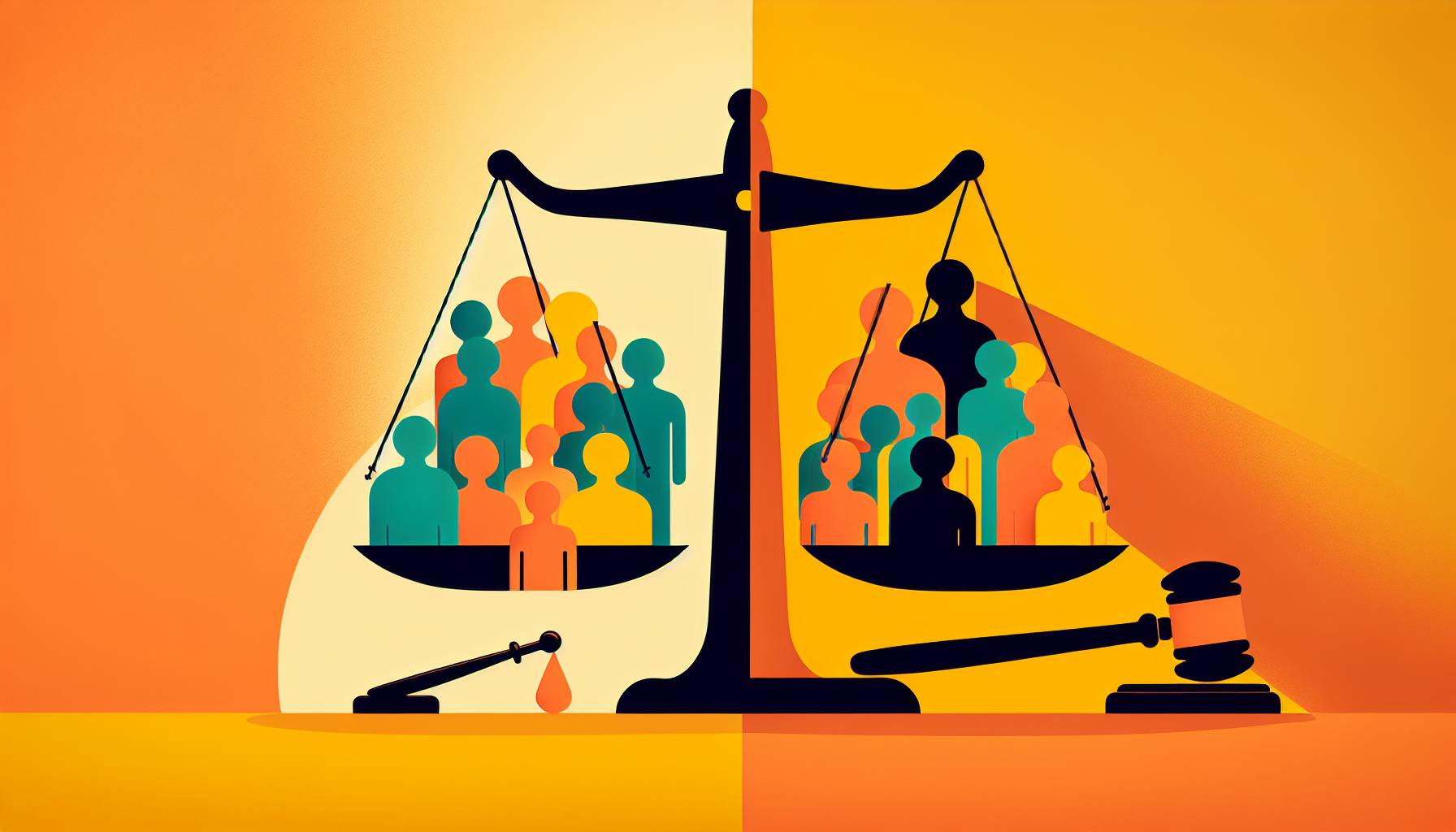Most would agree that the Patty Hearst kidnapping was a traumatic event that raises complex questions about victimization and accountability.
This article will provide an in-depth look at the details surrounding Hearst's kidnapping, reported brainwashing, controversial trial, and the larger debates it sparked about political radicalism and extremism in 1970s America.
We'll examine the key events of Hearst's ordeal, the Stockholm syndrome defense used by her lawyers, the role of her wealthy family's influence, and the verdict's impact on views of political violence at the time.
Introduction to the Patty Hearst Kidnapping and Trial
Patty Hearst, the granddaughter of wealthy publisher William Randolph Hearst, was kidnapped in 1974 by the Symbionese Liberation Army (SLA), a left-wing extremist group. What followed was a saga involving Hearst's apparent brainwashing and radicalization, participation in SLA bank robberies, and eventual capture and sensational trial.
Patty Hearst Kidnapping: The Start of an Ordeal
On February 4, 1974, 19-year-old Hearst was abducted from her apartment in Berkeley, California by SLA members. She was blindfolded, thrown in the trunk of a car, and held captive. In taped messages, the SLA demanded her family provide food for the poor as ransom. Hearst later claimed she was kept in a closet for 57 days, physically and sexually abused, and brainwashed into joining the SLA.
From Heiress to Urban Guerrilla: The Radicalization of Patty Hearst
Two months after her abduction, Hearst declared she had joined the SLA and taken the name "Tania." She was photographed wielding an automatic rifle during a bank robbery. Hearst later claimed she was forced to participate under threat of death. Prosecutors argued she had voluntarily become a revolutionary. This apparent Stockholm syndrome transformation captivated the public.
The Capture and Patty Hearst Trial: Legal Spectacle of the Century
In September 1975, Hearst was captured and charged with bank robbery. Her trial in 1976 was widely seen as the "trial of the century," with debates over brainwashing and Stockholm syndrome. F. Lee Bailey led her defense team. She was convicted and sentenced to 35 years in prison. After serving 22 months, Hearst's sentence was commuted by President Carter and later pardoned by President Clinton.
Media Circus: The Role of the Patty Hearst Documentary
Hearst's story has been the subject of several documentary films and TV movies. These portrayals and the massive media coverage during her trial likely influenced public perceptions. Speculation continues over whether Hearst was truly brainwashed or a willing convert. The questions around victimhood versus accountability have persisted long after her trial.
What happened to the people who kidnapped Patty Hearst?
Bill and Emily Harris pleaded guilty to kidnapping Patty Hearst and served eight years in prison for their crimes. This marked the end of the Symbionese Liberation Army (SLA) and their misguided attempt at revolution through violence and criminal acts.
The SLA was a small, radical leftist group that embraced militant tactics. Their kidnapping of Hearst, the granddaughter of wealthy publisher William Randolph Hearst, was intended to spark a revolution by underscoring economic and social injustices. However, their methods were extreme and unjustifiable.
Ultimately, the SLA collapsed after a violent confrontation with police in Los Angeles in 1974 that left six members dead, including leaders Donald DeFreeze and Patricia Soltysik. The remaining members went into hiding but were eventually captured. The Harrises struck a plea bargain, pleading guilty to kidnapping Hearst in exchange for lighter sentences.
While the SLA professed lofty ideals, their reckless methods undermined any legitimate social goals they hoped to achieve. The Harrises' convictions and imprisonment demonstrated that violence and coercion have no place in efforts to enact social change or address injustice. Their fate is a cautionary tale on the fruitlessness of radical extremism.
What syndrome did Patty Hearst have?
Patty Hearst claimed she suffered from Stockholm syndrome during her time with the Symbionese Liberation Army (SLA). Stockholm syndrome is a psychological response where hostages develop positive feelings towards their captors.
The key characteristics of Stockholm syndrome that applied to Hearst's case include:
- Hearst was held hostage for an extended period by the SLA. Initially kidnapped in 1974, she remained involved with the group for almost 2 years.
- Hearst appeared sympathetic to the SLA's goals and took part in their bank robberies. This suggests she bonded emotionally with her captors.
- Hearst did not try to escape, even when given opportunities. This implies a psychological dependence on the SLA.
Hearst's lawyers used Stockholm syndrome as part of her brainwashing defense at trial. They argued her participation in SLA crimes was unwilling and she had been indoctrinated. Prosecutors disputed whether Hearst genuinely had Stockholm syndrome.
Ultimately, Hearst served almost 2 years in prison before having her sentence commuted by President Carter. Her claim of Stockholm syndrome has remained controversial. While some experts believe she was brainwashed, others think she willingly took part in the SLA's activities.
What was Patty Hearst's defense?
Patty Hearst's main defense in her trial was that she had been brainwashed and coerced by the Symbionese Liberation Army (SLA) during her time held captive by them.
Her lawyers argued that the 19-month period she spent with the SLA amounted to "coercive persuasion" or "brainwashing." They claimed that Hearst was brutalized, threatened with death, physically and sexually assaulted, and kept isolated in a closet for weeks until her will broke down. At that point, she became a willing follower of the SLA and participated in their bank robberies and other crimes.
Hearst's lawyers pointed to her dramatic shift in behavior and identity as evidence that coercive control techniques had been used to gain her compliance. The defense team attempted to use expert psychological testimony to demonstrate she was suffering from "Stockholm syndrome" and had no control over her actions at the time the crimes occurred.
However, the brainwashing defense was unsuccessful. The prosecution demonstrated evidence that Hearst could have fled the SLA during her time with them but chose not to. The jury ultimately did not accept that she was coerced against her will into committing crimes over the extended 19-month period.
sbb-itb-585a0bc
sbb-itb-585a0bc
sbb-itb-585a0bc
sbb-itb-585a0bc
Where is Patty Hearst right now?
Patty Hearst, now known as Patricia Hearst Shaw, currently resides in New York and Connecticut with her husband Bernard Shaw and their two daughters.
After serving 22 months in prison for bank robbery, Hearst married her former bodyguard Bernard Shaw in 1979. Shaw, who heads security for the Hearst Corporation today, helped protect Hearst during her time in hiding from authorities in the 1970s.
The couple lives a quiet life focused on raising their children. While the high-profile kidnapping and trial brought intense notoriety decades ago, Hearst has avoided the spotlight in recent years. She advocates for prisoners and continues moving forward following her seven-year ordeal.
Unpacking the Patty Hearst Radicalization and Defense Strategy
Victim or Accomplice: Patty Hearst's Dual Identity
The kidnapping of Patty Hearst and her subsequent participation in illegal activities with her captors raised complex questions about victimhood, accountability, and consent. There is an ongoing debate about whether Hearst was brainwashed or whether she voluntarily joined the Symbionese Liberation Army. The facts of the case make it difficult to clearly determine Hearst's level of culpability.
The Brainwashing Defense: F. Lee Bailey's Controversial Strategy
F. Lee Bailey, Hearst's lead defense attorney, employed a controversial "brainwashing" defense at trial. He argued that Hearst was coerced through isolation, threats of violence, physical abuse, and psychological manipulation. The defense maintained that she was essentially "reprogrammed" to participate against her will. However, the brainwashing defense has been critiqued as enabling victim blaming and denying personal agency.
Wealth and Influence: William Randolph Hearst's Role
As the granddaughter of wealthy publishing magnate William Randolph Hearst, Patty Hearst had access to significant resources and public influence. Her family's political connections and efforts to sway public opinion in her favor impacted the trajectory of the case. There is also speculation that her celebrity status impacted the relatively light sentence she received.
The Stockholm Syndrome Debate: Understanding Patty's Allegiance
Some experts theorized that Patty Hearst developed Stockholm syndrome, causing her to form a psychological alliance with her captors as a survival strategy. However, the facts of the case make it difficult to conclusively determine whether Hearst's actions were motivated by sympathy for her captors or if she was fully in control of her faculties. There are reasonable arguments on both sides of this issue.
The Outcome of the Patty Hearst Trial and Its Legacy
Guilty as Charged: The Conviction and Its Controversies
On March 20, 1976, Patty Hearst was found guilty of bank robbery and using a firearm during a felony. She was sentenced to 7 years in prison. Many questioned the verdict, arguing that Hearst had been brainwashed and coerced into joining the SLA. The trial sparked debates about victimization, accountability, and the psychology of radicalization.
From Incarceration to Freedom: Hearst's Commuted Sentence
After serving nearly 2 years in prison, Hearst's sentence was commuted by President Jimmy Carter in 1979. She was released for good behavior. In 2001, President Bill Clinton gave Hearst a full pardon. Her early release and pardon recognized that she had been victimized, while also holding her accountable.
Revisiting Radicalization: The Trial's Impact on Views of Political Extremism
Hearst's trial focused attention on how people become radicalized. It raised awareness of brainwashing techniques and "Stockholm syndrome." However, questions persist about personal responsibility versus victimization. The trial's legacy continues to shape views on political extremism and the judicial system's response.
The FBI and Communism Fears: The Political Context of the Hearst Saga
The Patty Hearst saga emerged during a turbulent time of social unrest and fears of communism. The case prompted criticism of law enforcement's handling of political extremists. It also fueled ongoing debates about the judicial system's fairness and capacity to recognize nuances of victimization.
Conclusion: Reflecting on the Patty Hearst Kidnapping, Radicalization, and Trial
The Patty Hearst case was complex and controversial, sparking debates that still resonate decades later. Hearst was abducted in 1974 by the Symbionese Liberation Army, a radical leftist group. After two months in captivity, she participated in a bank robbery with her captors and later denounced her former life.
Hearst's defense claimed she had been brainwashed and developed Stockholm Syndrome. But she was convicted and sentenced to 35 years in prison. After serving nearly two years, Hearst's sentence was commuted by President Carter and later pardoned by President Clinton.
The themes raised by the case - victimhood, accountability, media influence - still stir discussion today. Hearst became a pop culture icon, her image emblazoned on t-shirts and posters. The case set legal precedents regarding brainwashing defenses. It also opened conversations around how kidnapping victims can become sympathizers.
While Hearst has largely retreated from public life, her extraordinary case continues to fascinate. The photos of her wielding a rifle during a bank robbery have become iconic symbols. The questions her saga provoked about free will, coercion, and personal responsibility defy easy answers. The Patty Hearst kidnapping, radicalization, and trial left a complex legacy that still sparks debates decades later.


